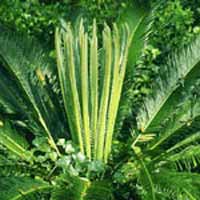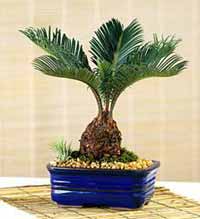 I just received a new edition of my ASPCA newsletter and one article in particular caught my eye. It was about the increased incidence of pets being poisoned by the Sago Palm. This plant can also be quite toxic to young children.
I just received a new edition of my ASPCA newsletter and one article in particular caught my eye. It was about the increased incidence of pets being poisoned by the Sago Palm. This plant can also be quite toxic to young children.
The Sago Palm is common in warm climates, but it’s become more popular in Northern homes as a houseplant. The plant is native to Southern Japan. It’s an attractive plant with dark green leaves and a hairy trunk.
Since 2003, the ASPCA Animal Poison Control Center has seen an increase in cases of Sago palm and Cycad poisonings by more than 200 percent. APCC data also reveals that 50 percent to 75 percent of those cases resulted in fatalities.
 A chemical in the plant called cycasin is toxic and often causes permanent liver damage as well as neurological damage if enough of the poison is absorbed by the body. The seeds are the most poisonous part of the plant, although all parts of this plant are toxic, and the effects on humans are seizures, coma and death. Of course the seeds are an attractive reddish color so children and possible curious pets might be drawn to the plant.
A chemical in the plant called cycasin is toxic and often causes permanent liver damage as well as neurological damage if enough of the poison is absorbed by the body. The seeds are the most poisonous part of the plant, although all parts of this plant are toxic, and the effects on humans are seizures, coma and death. Of course the seeds are an attractive reddish color so children and possible curious pets might be drawn to the plant.
Clinical signs of toxic poisoning are vomiting, melena (blood in stool), Jaundice, increased thirst, hemorrhagic gastroenteritis, bruising and later liver damage, liver failure and death.
If you have young children or pets in your home and you’d like to check to see if your house or garden plants are toxic you can take a look at this list of Toxic Plants. There’s also a list of non-toxic plants that you might also want to look at if you are planning on adding more plants to your collection.